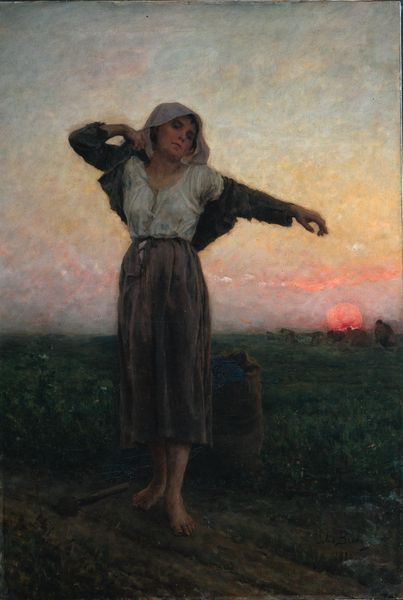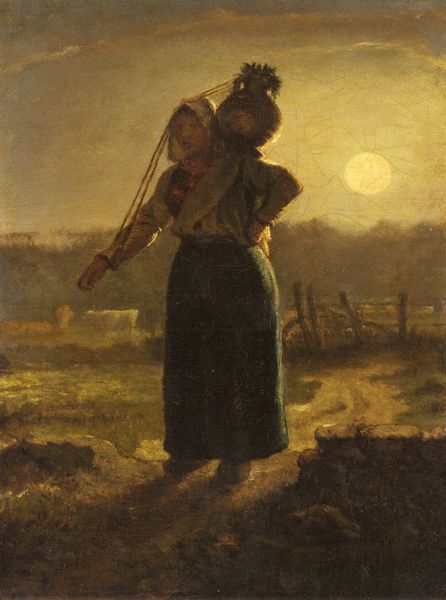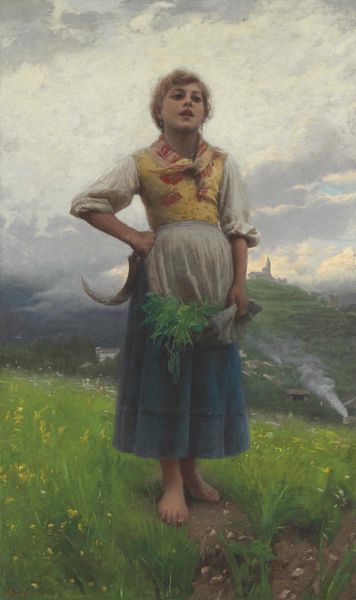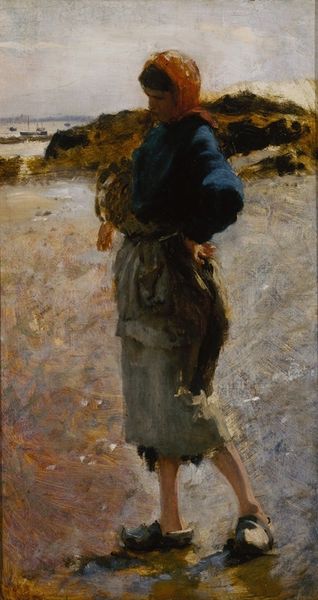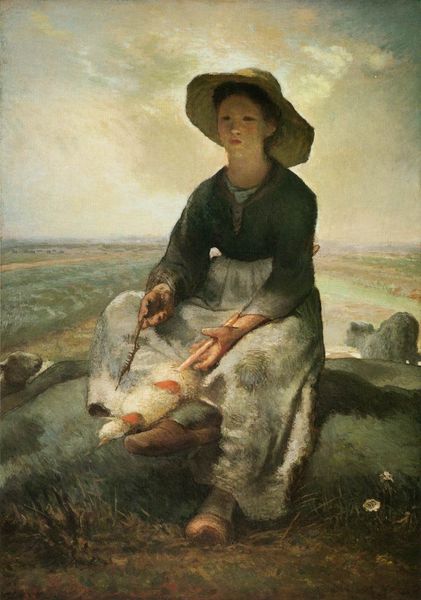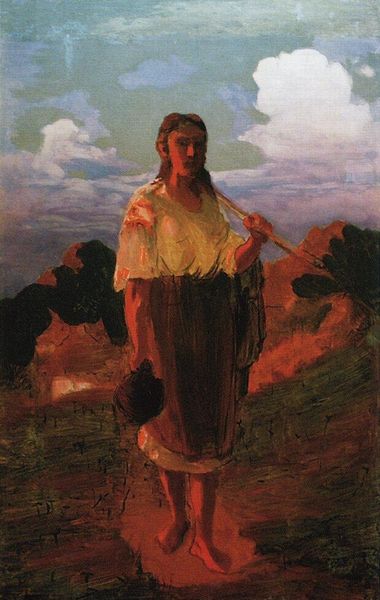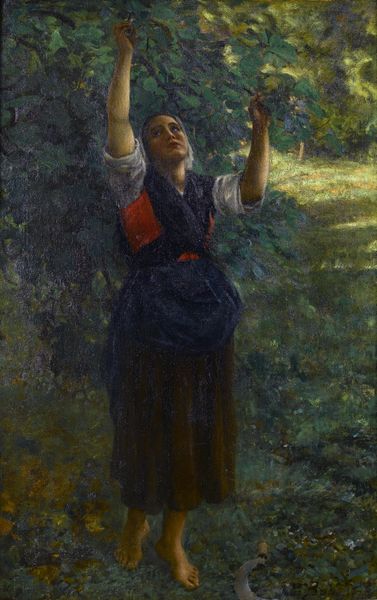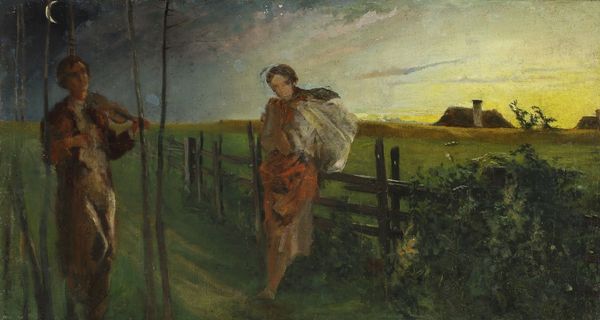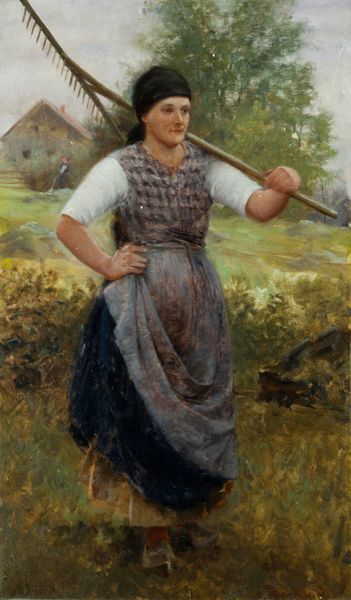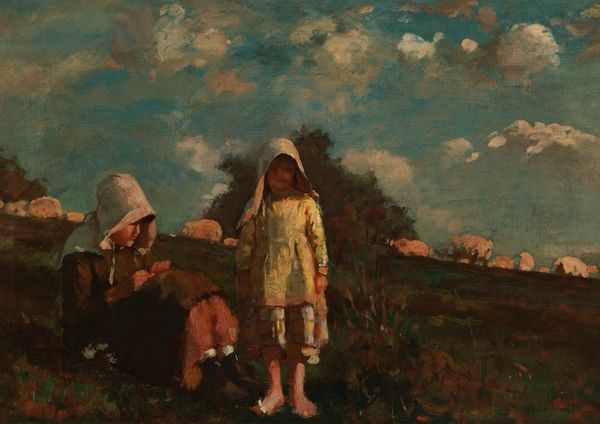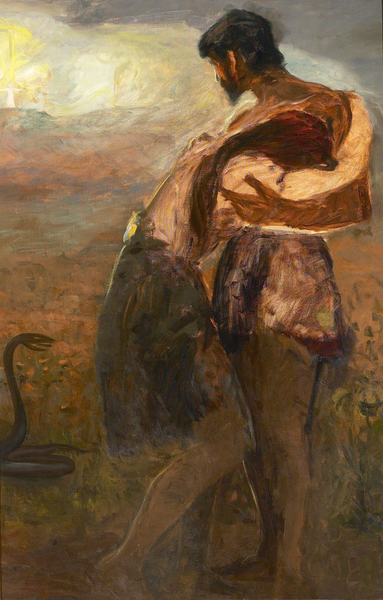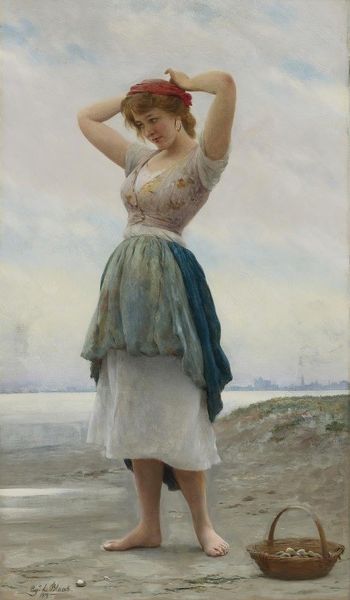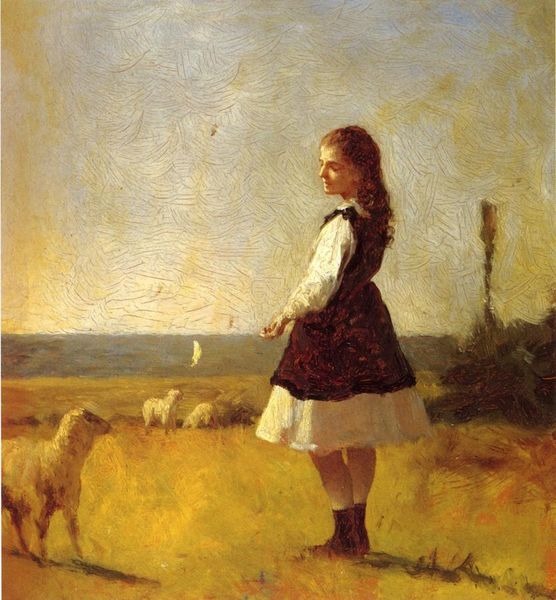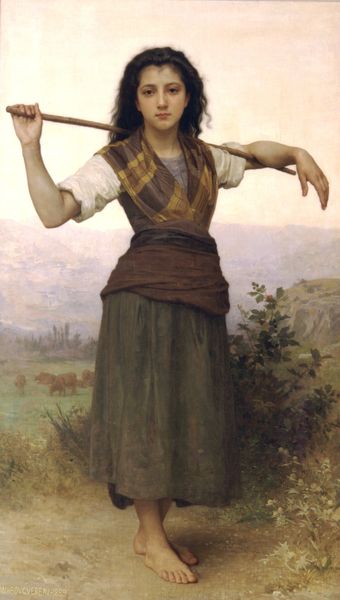
Copyright: Public Domain: Artvee
Curator: There’s something profoundly still about this image, despite the implied movement. A woman caught between earth and sky. Editor: Indeed. This is "A Norman Milkmaid at Gréville," an 1871 oil on canvas by Jean-François Millet. It depicts a young woman, presumably a milkmaid, walking along a path. It is bathed in a warm, muted light. What resonates with me immediately is its palpable air of weariness. Curator: That weight she carries, both literal and figurative. Notice the detail given to her posture, the way she balances the load. Her brow is obscured. The composition forces us to consider what this posture reveals about labor, about the often unseen and uncelebrated work that sustains communities. The basket suggests a narrative, the burdens— and maybe also gifts— that we pass along. Editor: Absolutely. Millet was known for his Realist depictions of peasant life, wasn't he? This image can be read in context of a larger political history. There is tension here between the idyllic and the brutally real conditions of rural labor, a social commentary that makes us confront the inequities of 19th-century France, where urban and rural experiences were vastly different, as they still are, for many in society. The image invites conversation about who has historically borne the physical burdens, both at home and in the fields, to make social progress. Curator: It’s more than just social commentary though; isn't there a deeper connection to archetypal imagery, the mythic roles that women fulfill? It strikes me as reminiscent of classical depictions of Ceres or Demeter, figures of sustenance. Here, the milkmaid embodies both the hardship and sacredness of agricultural labor. I think of women globally today still responsible for farming to feed their children. Editor: And at what cost? To place her into an allegorical box risks obscuring the more challenging reality of that era—one of class division and limited opportunity for women. Still, you’re right: the timelessness is inescapable. This speaks volumes to labor injustices in society—even now. Curator: Yes. A visual testament that reminds us that symbols can hold multiple truths at once. Editor: Leaving us to grapple with the contrasts. A challenging image indeed.
Comments
No comments
Be the first to comment and join the conversation on the ultimate creative platform.
